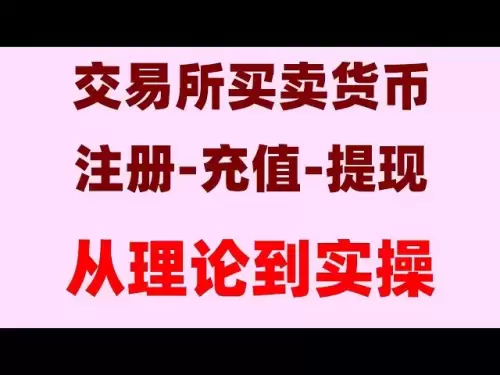 |
|
 |
|
 |
|
 |
|
 |
|
 |
|
 |
|
 |
|
 |
|
 |
|
 |
|
 |
|
 |
|
 |
|
 |
|
随着区块链技术的发展,可扩展性和可编程性仍然是主要的挑战,尤其是对于采用UTXO模型的区块链而言。

As blockchain technology continues to develop, scalability and programmability remain crucial challenges, especially for blockchains that adopt the UTXO model. Among the emerging layer-one public blockchains, Kaspa stands out with its high throughput achieved by the BlockDAG structure and the GHOSTDAG protocol. However, Kaspa, like Bitcoin, faces limitations in terms of native smart contract functionality, a strength of account-based chains like Ethereum.
随着区块链技术的不断发展,可扩展性和可编程性仍然是至关重要的挑战,尤其是对于采用UTXO模型的区块链而言。在新兴的一层公共区块链中,卡巴(Kaspa)脱颖而出,其较高的吞吐量是由块状结构和鬼影协议实现的。但是,Kaspa与比特币一样,在本地智能合同功能方面面临局限性,这是以太坊等基于帐户的链的优势。
To address this problem, the Kaspa ecosystem has been exploring several Layer 2 (L2) solutions, including Sparkle, Igra L2, and Kasplex L2. While Sparkle is still in the theoretical stage and Igra L2 is under development, our analysis will focus on Kasplex L2 as the closest to mature implementation.
为了解决这个问题,Kaspa生态系统一直在探索几层(L2)解决方案,包括Sparkle,Igra L2和Kasplex L2。尽管Sparkle仍处于理论阶段,而IGRA L2仍在开发中,但我们的分析将集中在Kasplex L2上是最接近成熟实施的。
Kasplex L2 is a second-layer scaling solution that keeps the first-level chain responsible for transaction ordering and data availability, shifting the computational load to the second layer. In this design, Kaspa's first-level chain, which uses the UTXO model and has a throughput of 10 BPS, determines the standard order of transactions and ensures that its data is accessible to everyone, while Kasplex L2 executes the Ethereum Virtual Machine (EVM) bytecode to perform smart contract functions.
Kasplex L2是第二层缩放解决方案,它使第一级链负责交易顺序和数据可用性,将计算负载转移到第二层。在此设计中,使用UTXO型号的Kaspa的第一级链条,其吞吐量为10 bps,确定了交易的标准顺序,并确保每个人都可以访问其数据,而Kasplex L2则执行以太坊虚拟机(EVM)bytecode来执行智能合约功能。
The core mechanism of Kasplex L2 is to embed EVM bytecode in the payload of Kaspa primary chain transactions. This process can be divided into the following steps:
Kasplex L2的核心机制是将EVM字节嵌入Kaspa主要链交易的有效载荷中。此过程可以分为以下步骤:
* Transaction submission: A user submits a transaction to the Kaspa primary chain, where the payload contains EVM bytecode. For example, the payload may encode a call to the HelloWorld() smart contract function.
*事务提交:用户将事务提交给Kaspa主链,有效载荷包含EVM字节码。例如,有效载荷可以编码呼叫到Helloworld()智能合约功能。
* First-level chain ordering: Kaspa's BlockDAG orders transactions within its DAG structure, providing a deterministic transaction sequence.
*第一级链排序:Kaspa的BlockDag订单在其DAG结构内交易,提供确定性的交易序列。
* Layer 2 execution: Kasplex L2 runs as an indexer, scanning the payload transactions on the primary chain, extracting the EVM bytecode, executing it in the specified order, and updating its state. Invalid or conflicting transactions (such as transactions attempting to double-spend) will be discarded.
*第2层执行:Kasplex L2作为索引器运行,扫描主链上的有效载荷交易,提取EVM字节码,以指定的顺序执行并更新其状态。将丢弃无效或冲突的交易(例如试图进行双重支付的交易)。
Transaction submission mechanism
交易提交机制
Kasplex L2 supports two transaction submission methods, each having different effects:
Kasplex L2支持两种交易提交方法,每种都有不同的影响:
* Canonical Submission: Transactions are submitted directly to L1 through Kaspa-compatible wallets. This method does not require relay nodes and complies with the decentralization principle of the blockchain system.
*规范提交:交易通过兼容Kaspa的钱包直接提交给L1。该方法不需要继电器节点,并且符合区块链系统的权力下放原理。
* Proxied Submission: Transactions are submitted through a relayer to be compatible with EVM tools like MetaMask. The relayer forwards the transaction to Kaspa L1 to ensure that it is recorded before being processed by L2. This approach prioritizes user convenience but introduces a reliance on relayers.
*代理提交:交易是通过接送器提交的,与MetAmask等EVM工具兼容。接送器将交易转发给Kaspa L1,以确保在通过L2处理之前对其进行记录。这种方法优先考虑用户的便利性,但介绍了对接送器的依赖。
The proxy submission mechanism ensures atomicity by requiring all second-layer transactions to be anchored on the L1 chain. If a transaction is generated on L2 but has not yet been recorded on the primary chain, the relayer will submit it to the L1 chain for confirmation. This design prevents "native" L2 transactions that bypass the L1 chain consensus and avoids potential security risks.
代理提交机制通过要求将所有第二层交易固定在L1链上来确保原子。如果在L2上产生了交易,但尚未在主要链上记录,则接力杆将其提交给L1链以进行确认。该设计阻止了绕过L1链共识并避免潜在安全风险的“本机” L2交易。
The following figure illustrates the two submission paths:
下图说明了这两个提交路径:
Canonical path: Wallet → Kaspa L1 → Kasplex L2
规范路径:钱包→Kaspa L1→Kasplex L2
Proxy path: MetaMask → Relay → Kaspa L1 → Kasplex L2
代理PAT:MetAmask→Raye→Kaspa L1→Kasplex L2
As you may notice, the transaction is actually finalized on L1 before being interpreted by the L2 indexer. This is exactly how Kasplex L2 works: L1 finalizes the data first, and then L2 reads the transaction and updates the state.
您可能会注意到,在由L2索引器解释之前,该交易实际上是在L1上完成的。这正是Kasplex L2的工作方式:L1首先最终完成数据,然后L2读取交易并更新状态。
To better understand Kasplex L2, we can compare it with Bitcoin Inscriptions (specifically BRC-20), another approach to expanding the programmability of UTXO model blockchains. Both aim to integrate the strengths of the first-level chain—transaction ordering and data availability—while shifting computational complexity to the second layer, but they differ in their implementation and goals.
为了更好地了解Kasplex L2,我们可以将其与比特币铭文(特别是BRC-20)进行比较,这是扩展UTXO模型区块链的可编程性的另一种方法。两者都旨在整合第一级链的优势 - 交易订购和数据可用性,同时将计算复杂性转移到第二层,但它们的实施和目标有所不同。
Similarities
相似之处
Both Kasplex L2 and BRC-20 embed useful data in primary chain transactions. BRC-20 leverages Bitcoin's Tapscript (enabled by the SegWit upgrade) to store token metadata, typically in a three-step process: "commit (data hash) → reveal (reveal, data itself) → spend (spend, token transfer)."
Kasplex L2和BRC-20都嵌入了初级链交易中的有用数据。 BRC-20利用比特币的Tapscript(由SEGWIT升级启用)存储令牌元数据,通常在三步的过程中:“ commit(data hash)→揭示(揭示,数据本身)→支出(支出(支出,代币传输)”。
In contrast, Kasplex L2 embeds EVM bytecode into the payload of Kaspa L1 transactions. For example, if we want to execute a HelloWorld() function in a smart contract, the compiled bytecode will be put into the transaction payload. This structure enables L2 to perform the same functions as a standard EVM chain.
相比之下,Kasplex L2将EVM字节嵌入Kaspa L1交易的有效载荷中。例如,如果我们想在智能合约中执行helloworld()函数,则编译字节码将放入事务有效载荷中。该结构使L2能够执行与标准EVM链相同的功能。
Moreover, both rely on the first-level chain for ordering operations. For BRC-20, the Bitcoin blockchain is used to order token transfers, while Kasplex L2 leverages Kas
此外,都依靠一级链来订购操作。对于BRC-20,比特币区块链用于订购令牌转移,而Kasplex L2则使用KAS
免责声明:info@kdj.com
所提供的信息并非交易建议。根据本文提供的信息进行的任何投资,kdj.com不承担任何责任。加密货币具有高波动性,强烈建议您深入研究后,谨慎投资!
如您认为本网站上使用的内容侵犯了您的版权,请立即联系我们(info@kdj.com),我们将及时删除。
-

- 如果比特币再次下降到$ 90k,这是卡巴价格
- 2025-05-19 20:15:13
- Kaspa以及其他Altcoins本周尚未以高音开始。现在,KAS价格下跌了5%,但仍高于至关重要的0.10美元支持。
-

- 比特币(BTC)收回其历史上的每周收盘价记录
- 2025-05-19 20:15:13
- 比特币再次通过确保其有史以来最高的每周收盘价占领了头条新闻,这表明整个加密货币市场的势头持续强劲。
-

- 澳大利亚男子失去了24个比特币,海滨豪宅和梅赛德斯·奔驰
- 2025-05-19 20:10:14
- 根据5月18日的报告,没收的刑事资产工作人员搬进去夺取价值450万美元的硬币和财产
-

-

- 极端看涨的情绪命中了加密货币:机会还是设置?
- 2025-05-19 20:05:13
- 加密货币市场已经进入了看涨情绪的激烈阶段,在分析师和投资者中都引发了乐观和谨慎。
-

- 加密鲸鱼正在倾倒Dogecoin(Doge)和Shiba Inu(Shib)购买惩罚者硬币($ pun)预售
- 2025-05-19 20:05:13
- 加密货币市场在第二季度2025年迅速发展,鲸鱼也是如此。
-

-

- Ripple与第一个区块链付款客户扩大阿联酋的存在
- 2025-05-19 20:00:32
- 这一发展是在Ripple成为2025年3月从DFSA获得许可证的第一批启用区块链的付款提供商两个月之后。
-






























































